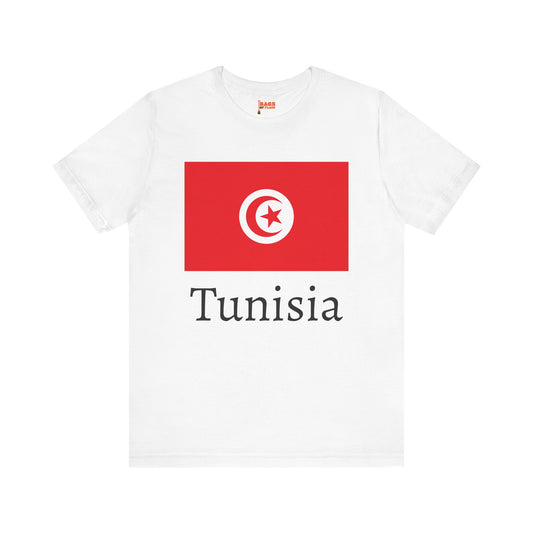-
Tunisia Sweatshirt
Regular price $34.15 USDRegular priceUnit price / per -
Tunisia Flag Sweatshirt
Regular price $34.15 USDRegular priceUnit price / per -
Tunisia Inspired Sweatshirt
Regular price $34.15 USDRegular priceUnit price / per -
Tunisia Pillow
Regular price $22.65 USDRegular priceUnit price / per -
Tunisia Backpack
Regular price $59.79 USDRegular priceUnit price / per -
Tunisia Leather Patch Hat
Regular price $18.85 USDRegular priceUnit price / per -
Tunisia Mug
Regular price $11.65 USDRegular priceUnit price / per -
Tunisia Trucker Cap
Regular price $14.90 USDRegular priceUnit price / per -
Tunisia Hoodies
Regular price $34.40 USDRegular priceUnit price / per -
Tunisia Inspired Hoodie
Regular price $34.40 USDRegular priceUnit price / per -
Tunisia T-shirts
Regular price $22.79 USDRegular priceUnit price / per -
Tunisia Flag Hoodies
Regular price $34.40 USDRegular priceUnit price / per -
Tunisia Inspired T-shirt
Regular price $22.79 USDRegular priceUnit price / per -
Tunisia Flag on T-shirt
Regular price $22.79 USDRegular priceUnit price / per
Collection: Tunisia
The Tunisia flag, also known as the flag of Tunisia, is a symbol of national pride and identity for the North African country. This red and white flag has a rich history and significant symbolism for Tunisians. We will explore the design, colors, historical context, symbolism, current relevance, and additional facts and protocols surrounding the Tunisia flag.
Overview of the Tunisia Flag Design and Colors

At its core, the flag of Tunisia is a striking representation of the nation's values and history, featuring a vibrant red field enveloped around a central white circle. Within this circle lies a red crescent encircling a red five-pointed star. The selection of red as the dominant color of the flag is deeply rooted in the nation's struggle for freedom, paying homage to the courage and sacrifices of those who laid down their lives for independence.
Beyond its visual appeal, the white circle serves as a canvas for the crescent and star, symbols deeply ingrained in Islamic culture and faith, which plays a pivotal role in Tunisian society. This emblematic combination of red and white traces back to the heritage of the Beylik of Tunis but also unifies the Tunisian people under a banner that reflects their religious beliefs and their passionate history of resilience and unity.
Historical Context of the Tunisia Flag
The inception of the Tunisia flag as we know it today traces back to the era following the nation's emancipation from French colonial rule. While Tunisia declared its independence in 1956, it was not until July 3, 1959, that the flag received its official status, marking a significant milestone in the country's newfound sovereignty. This period was a critical juncture for Tunisia, as it sought to establish symbols that would encapsulate its rich heritage and signify the dawn of a new era.
Before this, a simpler design, predominantly featuring a crescent moon and star against a red backdrop—echoes of the Ottoman influence—served as the nation's banner during the French protectorate. The decision to adopt the current design was more than an act of changing visuals; it was a deliberate effort to forge a distinct national identity that could resonate with and unify the Tunisian populace. This transition from the previous flag to the current one was emblematic of Tunisia's journey from a colonial past towards self-determination and independence, reflecting broader themes of liberation and the reclamation of national heritage.
Symbolism Behind the Tunisia Flag

The symbolism in the Tunisia flag is profound and multifaceted, reflecting the nation's identity, beliefs, and aspirations. The predominant red hue is a powerful reminder of the blood shed by martyrs in the struggle for independence, emphasizing a collective memory of sacrifice and bravery. This color memorializes those who fought for the country's freedom and symbolizes the Tunisian people's strength and vitality.
Central to the flag's design, the white circle starkly contrasts the red background, symbolizing peace and purity. Within this circle, the crescent and the star hold deep Islamic significance, representing the unity of all Muslims and the guiding light of faith that leads the nation forward. The crescent, an enduring symbol of Islamic identity, underscores Tunisia's connection to the wider Muslim world. At the same time, the five-pointed star symbolizes the five pillars of Islam, which are the foundation of the Tunisian ethos.
Together, these elements convey a message of unity, faith, and a relentless pursuit of freedom and prosperity. The flag is a national emblem and a beacon of hope, guiding the country toward a future filled with light and promise. Through its colors and symbols, the Tunisia flag narrates the story of a nation deeply rooted in its past yet ever striving towards a brighter tomorrow.
Current Relevance of the Tunisia Flag
In today's Tunisia, the flag continues to be a vibrant symbol of sovereignty and national pride. It adorns public buildings and educational institutions prominently and is a mainstay at significant cultural and historical commemorations. The sight of the flag during national holidays, particularly on Independence Day, evokes a collective sense of pride and unity among Tunisians. In addition to its presence in civil celebrations, the Tunisia flag plays a crucial role in military ceremonies, where it is revered as a symbol of the bravery and sacrifices made by the armed forces.
Despite its universal acceptance and reverence, the flag has occasionally sparked discussions regarding its symbolism in the context of Tunisia's evolving identity and societal values. These debates often reflect broader conversations about national identity and the integration of traditional symbols in a modern state. Nonetheless, the flag remains an enduring emblem of Tunisia's heritage, embodying the aspirations and resilience of its people. It is a constant in the lives of Tunisians, a source of inspiration, and a reminder of the shared history and common future that binds the nation together.
Additional Facts and Protocols for the Tunisia Flag
Adherence to established protocols when displaying or handling the Tunisia flag underscores the Tunisian people's deep respect and reverence for their national emblem. Notably, the flag must be flown to ensure it never makes contact with the ground, symbolizing the sanctity and elevated status of the nation it represents. During periods of national mourning or to honor the memory of significant figures, the flag is flown at half-mast, a solemn gesture of respect and remembrance.
Furthermore, a comprehensive set of guidelines dictates the flag's appearance in public spaces and during official state functions, ensuring its dignified presentation. An intriguing aspect of the Tunisia flag is its incorporation of the crescent and star, a design element that ties it to the broader Islamic world, signifying the country's rich cultural and religious lineage. This emblem, deeply woven into the fabric of Tunisian identity, serves as a continuous reminder of the nation's heritage and the principles upon which it stands.




























